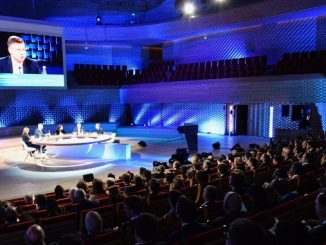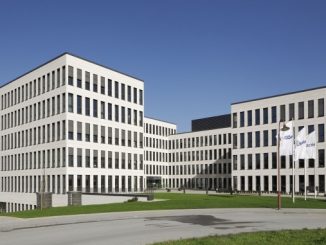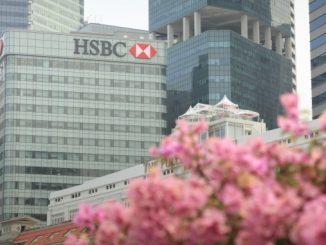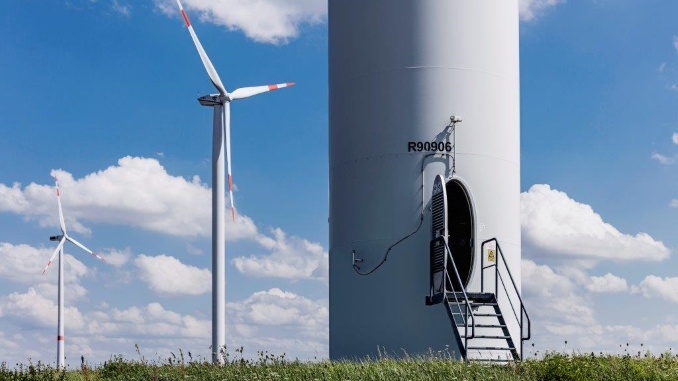
Deutsche Kreditbank head of treasury Thomas Pönisch attributed impressive pricing on its second green bond on Tuesday to the “green factor”, while the German lender extended its commitment to the market with a longer oekom agreement and a larger pool that could see a private placement follow.
Deutsche Kreditbank (DKB) entered the green bond market in June 2016, with a EUR500m five year deal, and Tuesday’s follow-up is again to refinance loans to wind and solar power plant projects.
Leads ABN Amro, BayernLB, HSBC, Natixis and UniCredit went out with initial price thoughts (IPTs) of the low to mid-40s over mid-swaps. The EUR500m no-grow size was reached within half an hour and guidance was revised to the 38bp area, plus or minus 3bp, on the back of EUR900m of orders. The pricing was fixed at 35bp over mid-swaps with the book above EUR1bn, and orders ultimately totalled EUR1.2bn.
The leads looked at other top German names as comparables, with Berlin Hyp 2023s (also green) bid at 13bp over, its 2025s at 22bp, LBBW 2022s at 24bp, and DKB’s own previous 2021 green bond in the high teens. They put fair value at around 30bp over, meaning that DKB achieved a new issue premium of around 5bp.
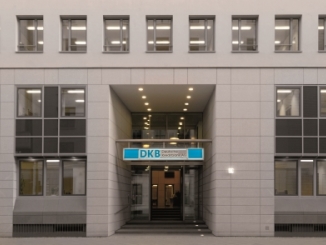 It followed a EUR500m eight year senior issue for compatriot Commerzbank on Tuesday of last week (12 September) that was launched with IPTs in the 70s and re-offered at 63bp over, which a syndicate banker at one of DKB’s leads said reflected a new issue premium in the low double-digits. He said this and other non-green senior deals that also paid similarly higher premiums than DKB struggled to attract the level of oversubscription the new green issue achieved.
It followed a EUR500m eight year senior issue for compatriot Commerzbank on Tuesday of last week (12 September) that was launched with IPTs in the 70s and re-offered at 63bp over, which a syndicate banker at one of DKB’s leads said reflected a new issue premium in the low double-digits. He said this and other non-green senior deals that also paid similarly higher premiums than DKB struggled to attract the level of oversubscription the new green issue achieved.
“From the start of the project we had been targeting the mid-30s because we found that to be reasonable if you look at the comparables,” said Pönisch, “but when we saw Commerzbank we said, OK, that will be tough to achieve because it looked somewhat wider than we expected. So if you take that into account and see that we achieved an order book of well above EUR1bn, that is really good.
“That is the success of this transaction: the very tight pricing and a very strong and granular order book.”
Pönisch said he is convinced the “green factor” meant that pricing was tighter than it otherwise would have been.
“More than a third of the demand was from green investors, and if they weren’t in the book it would still have been above EUR500m but of course you are not able to achieve the same tight pricing,” he said. “And because you get that momentum, you have many other fund managers who look at your deal because they are also interested in green even if they don’t have a dedicated portfolio yet.
“So basically it gives you strong demand and you are able to price tighter than you would without green. That’s what I think – I can’t prove it, but the green factor definitely draws a lot of attention.”
The official number of accounts in the order book was 113, with co-lead Bankhaus Lampe contributing granular orders, according to Pönisch. He noted that the 113 number also masked participation from another German bank, which had aggregated orders from some 35-40 accounts, taking the number of end-investors above 150.
Asset managers were allocated 38%, banks 36%, insurance companies 18%, central banks and official institutions 5%, and corporates 3%. Germany took 69%, France 6%, the UK 6%, the Benelux 6%, southern Europe 5%, the Nordics 4%, and others 4%.
DKB went ahead with the deal after the announcement of its first-half results on 25 August. Before the summer it had met with investors to discuss the first year reporting for its debut green bond and also participated in industry conferences, and Pönisch said this, as well as the issuer’s standing in the market, meant that it could approach the market on relatively short notice on the basis of conference calls and one-on-one investor calls. It held these last week after announcing a mandate for an expected deal on Monday of last week (11 September).
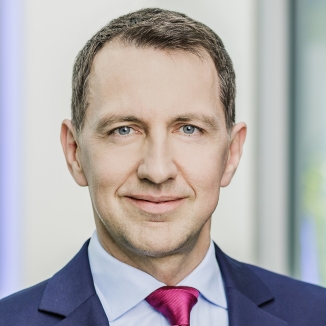
The bank had been planning to launch its second green bond in the second half of the year, but came relatively soon after the summer because of pending events, such as German elections on Sunday.
“We felt the market was right and everything was prepared,” said Pönisch (pictured), “so we moved the transaction forward a little. We didn’t want to have any disturbing noise from politics, the economy or tapering, so we went for this good window sooner rather than later.”
The seven year maturity meanwhile looked like a sweet-spot, he added, and allowed DKB to build up its curve after last year’s five year.
The deal – with an A2 Moody’s credit rating – is not only DKB’s second green bond, but only its second ever senior unsecured benchmark after it debuted with the green bond last year. It is meanwhile an established issuer in the benchmark covered bond market.
An extended commitment
Within an oekom-rated peer group of 90 financials/public and regional banks, DKB has the highest corporate rating, being the only one to achieve B-. Its new green bond will only be assessed after launch, but its debut achieved a rating of “a”, the best of any bond rated by oekom. According to Pönisch, the new programme is very similar to the first.
“There was no reason to do anything differently, because actually we had the best possible result with an excellent rating by oekom, so we are sticking to the same standards,” he said. “We set a high bar last year.”
The new green bond is issued against a EUR896m pool of loans, whereas the first programme’s size was closer to the first bond’s size. Pönisch said the bank therefore has the flexibility to issue a private placement following the EUR500m benchmark, with the already-established programme making this more efficient.
DKB has also established a longer relationship with oekom for the larger programme, not only commissioning the second party opinion at launch, as it did last year, but engaging the rating agency for three years with an annual review of the programme.
“In principle, this second party opinion will stay valid for a period of three years until 31 August 2020,” said oekom. “However, every year following the initial issuance, oekom will carry out an additional assessment and update the respective parts of the second party opinion.”
Oekom will review the asset pool if new projects have been added and the issuer’s sustainability evaluation will be updated.
“So we think the programme is really good and for three parties,” said Pönisch. “It is good for us, it is good for oekom, and also for the investor because they have a guarantee that oekom is doing an annual review.
“What we want to underline is that we have a strong and very granular pool, strong new business in this sector, and one of the largest portfolios in Germany, at around EUR10bn, so we are not a one-hit wonder,” he added. “That’s what we just proved to the market by coming with a second deal – we have no particular need for this funding as German banks are flooded with liquidity; it’s about the long term relationship with the investor and the perfect fit between the underlying project business and its related senior unsecured funding.”
The new programme again complies with the Green Bond Principles.
Wind-farm photo credit: Monique Wuestenhagen/DKB

